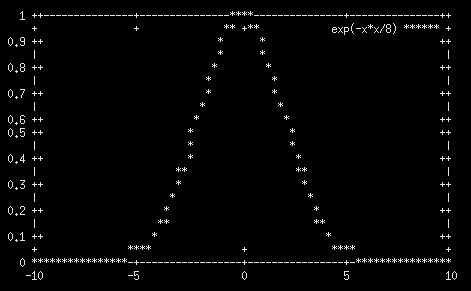

All values (start, stop and increment) are casted to integer values. For example for will increment i from 0 to 6 in 2 steps: i = 0, 2, 4, 6. In these case the for iteration loop results very useful: p for "data_set.dat" using 1:col w lpīriefly the for iteration increment the variable in the loop, in this case col, with a decided steps (if not specified = 1).

In the case you have more columns and want to plot them all in the same graph just pass to the plot function any argument you prefer, by separating them with a ,: p "data_set.dat" u 1:2 w lp,\Īnyway sometimes there could be too much columns to write one by one. # the abbreviated form is completely equivalent: E.G.: plot "data_set.dat" using 1:4 with linespoint An useful style for data plotting is linespoint which is, obviously, "lines + points".

Which will plot the same as if you do not type with point.
#Gnuplot for loop how to
As said before, the default style is point plot "data_set.dat" using 1:4 with point the command reread is very useful, but if the gnuplot file is launched, for example, through a desktop shortcut, then untrained user may not understand how to completely close gnuplot window (ctrl+alt+del in Windows, 'killall gnuplot' in Linux). There are also different style (see gnuplot documentation or Selecting a plotting style for further infos) for plotting points. In the case your data set is a tridimensional file just use splot ad add the z-column splot "data_set.dat" using 1:2:3 Which means "plot the file using column 2 as X and column 4 as Y". To specify the columns to be plotted use the using specifier plot "data_set.dat" using 2:4 The default settings will use the first two columns of your data file, respectively x and y. Gnuplot will produce a graph in your output destination. Now everything is ready to make the data plot: by typing only plot "data_set.dat"

# Prototype of a gnuplot data setĪs you can see you can write in your data set in floating point notation. |* *** * '/tmp/numbe$$.The default gnuplot command plot (also only p) plot dataset with columns, of the form of the data_set.dat file below. I don’t consider this a good example, but it can be done: $ gnuplot -p -e "set terminal dumb set format y '%.0f' plot for '/tmp/numbers.txt' using col with lines"ġ20000000 +-+ If the graph is not too complex, the terminal can display output in ASCII format. Line 0: warning: Skipping data file with no valid points If a column does not exist, a cosmetic error is displayed.Įxample run, which generates the same graph displayed above: $ gplot /tmp/numbers.txt > graphs up to 20 columns of numbers in the input file. By using a Bash function, we can simplify it even more. This command is not the easiest to remember. Using col with line -> Plot the numbers on a line graph. Create a for loop which graphs each column then plot the data. Plot for -> In this example there are 3 columns of numbers in the input file. Set format y '%.0f' -> Change the default Y axis from scientific notation, to standard numbers. This is necessary while running in non-interactive mode from the command line, otherwise the image disappears after execution. Specify the x range first, then the y range. You can specify these in a minimum:maximum form before the function. p -> Keep the window open after the GNUPlot command exits. So, after starting up gnuplot, at the gnuplot> prompt you would type: plot exp (-x2 / 2) Usually, you'll want a little more control over your plot, at least specifying the ranges for the x- and y-axes. Generate a basic graph with GNUPlot: gnuplot -p -e "set format y '%.0f' plot for '/tmp/numbers.txt' using col with lines" This is when I turn to GNUPlot for quick ad-hoc graphing. However, there are instances when I would like to quickly analyze a data set then throw away the results when finished. There are many tools to plot or graph data points.


 0 kommentar(er)
0 kommentar(er)
